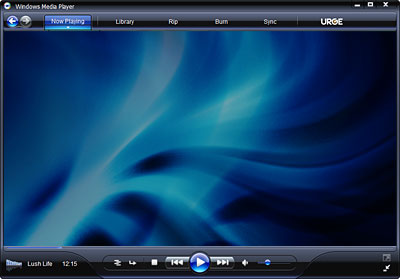
- WINDOWS MEDIA PLAYER 11 OS X MAC OS X
- WINDOWS MEDIA PLAYER 11 OS X MAC OS
- WINDOWS MEDIA PLAYER 11 OS X INSTALL
- WINDOWS MEDIA PLAYER 11 OS X UPDATE
- WINDOWS MEDIA PLAYER 11 OS X WINDOWS 10
WINDOWS MEDIA PLAYER 11 OS X UPDATE
The sheer amount of bad will created by a software upgrade that essentially doesn't seem like much more than a user interface update is rubbing many Microsoft diehards the wrong way.
WINDOWS MEDIA PLAYER 11 OS X WINDOWS 10
Ready or not, Windows 11 is on target to leave stranded hundreds of millions of systems on Windows 10 - which will still be supported until January of 2025. To quote ZDNet columnist David Gewirtz, the affected systems will " become the walking dead." Unfortunately, so many PCs will be left out. These Intel chips shipped beginning in August 2016 and are still sold in retail channels, including Microsoft's Surface Studio systems. But the signs aren't promising for many PC users running Windows 10 that hoped to take this upgrade with minimal impact: that's based on its current system requirements, including a Trusted Platform Module running at version 2.0 and the elimination of all Intel x86 systems Generation 7 and earlier. It may be too early to tell if Windows 11 is to become one of the most hated releases ever, as it hasn't even been released yet. Windows 11 Release date: Fall 2021 Screenshot by ZDNet In addition, Windows NT 3.1 was expensive (the workstation version was $500), had substantial minimum hardware requirements for the time (a 386 processor and 12MB of memory), and ran best on non-Intel systems such as DEC Alpha and the MIPS. 16-bit Windows apps from Windows 3.1 could run on it, but they ran slowly and not very well - and DOS compatibility was horrible. Windows NT was a native protected mode, multiprocessor-capable, multithreaded, multiuser, processor architecture-independent, true preemptive multitasking OS, but it needed to run Win32 apps written specifically to take advantage of those features. While the OS shared an identical Windowing interface with Windows 3.1, the popular business version of Windows that ran on top of DOS, the two systems were extremely different architecturally. Initially started as a re-write of the OS/2 3.0 operating system that IBM and Microsoft collaborated on, the two companies parted ways, and Microsoft decided to take Windows NT in its own direction, hiring Dave Cutler from DEC, the architect of the VMS operating system, to run the core development team. Windows NT 3.1 Release date: July 1993 MicrosoftĪlthough this OS is the basis for the kernel that all modern versions of Windows currently are based on, this was a major sea change for the platform, and it had a rocky start. In addition to allowing you to play your files, this app will also let you make a library of your media files. Some of these issues were rectified in Windows 3.0, which followed in 1990. If youre looking for a convenient app to let you play your audio and video files, you might want to give Windows Media Player 11 a try. You also couldn't page out to virtual disk if you started to run out of memory. It's inconceivable now that end-users put up with this stuff, but we did. So that meant that if you wanted to use those apps, you would need a boot floppy and need to reboot into DOS to run them. For example, its memory manager was incompatible with DOS memory managers, such as QEMM or the DOS Extenders needed by applications such as Lotus 1-2-3, the most popular spreadsheet. However, Windows 386 had significant stability issues. MS-DOS could only run one application simultaneously Windows 386 allowed DOS apps to run in the background instead of suspended, although timing-sensitive apps had issues.

This allowed it to have a limited form of preemptive multitasking, which was a significant technological improvement for PC OSes. The 386 version allowed it to run in protected mode, above which applications and the GUI ran as a virtual task in the 8086 instruction set. Get it for PowerPC or Intel.Windows 2.10 came in two different flavors, one for the Intel 80286 16-bit processor and the other for the Intel 80386 32-bit processor. Note that support ended for all releases listed below and hence they won't receive any further updates. You can find recommendations for the respective operating system version below.
WINDOWS MEDIA PLAYER 11 OS X MAC OS
We provide older releases for users who wish to deploy our software on legacy releases of Mac OS X.

WINDOWS MEDIA PLAYER 11 OS X MAC OS X
Older versions of Mac OS X and VLC media player The last version is 3.0.4 and can be found here. Support for NPAPI plugins was removed from all modern web browsers, so VLC's plugin is no longer maintained.
WINDOWS MEDIA PLAYER 11 OS X INSTALL
You can also choose to install a Universal Binary. If you need help in finding the correct package matching your Mac's processor architecture, please see this official support document by Apple. Note that the first generation of Intel-based Macs equipped with Core Solo or Core Duo processors is no longer supported. Previous devices are supported by older releases.

It runs on any Mac with a 64-bit Intel processor or an Apple Silicon chip.

VLC media player requires Mac OS X 10.7.5 or later.


 0 kommentar(er)
0 kommentar(er)
